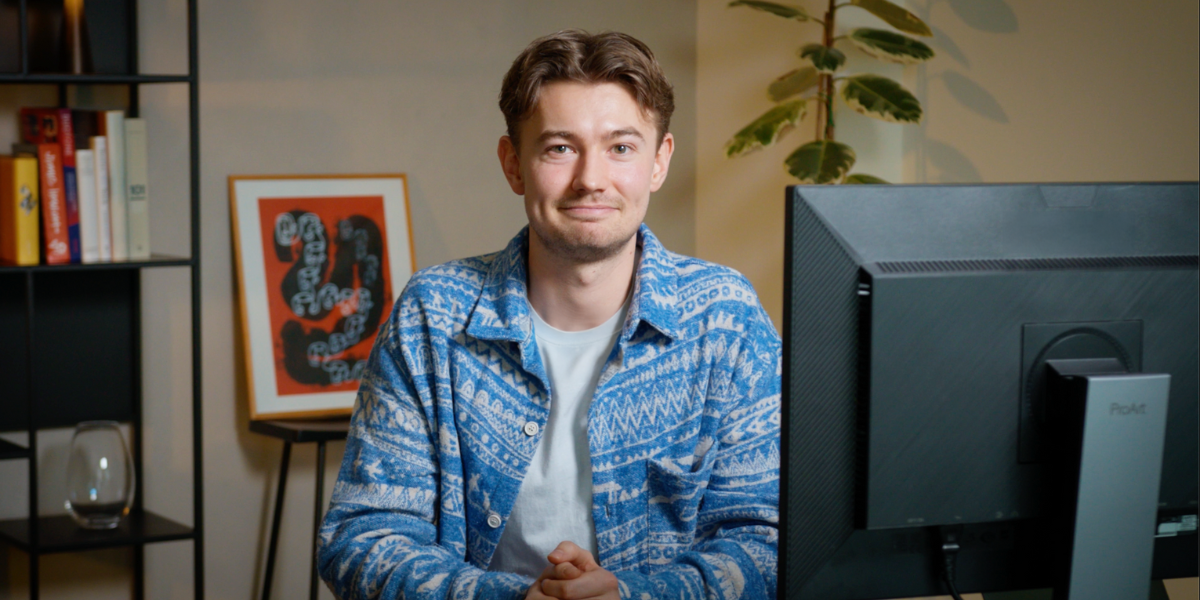Everyone has a pandemic story. Some will remember the day a state of emergency was declared in their country; others will have taken precautions months prior.
I remember the quickness of it all — societal norms flipping, turning, and somersaulting, which still makes my head spin when I read an early entry in my notebooks dating back to 2020. It was supposed to be the year of renewal. Everyone was going to get a fresh start. I remember discussing this on my friend’s porch during the early stages of the pandemic.
The faint possibility of our year hung in the air like the aftermath of fireworks, dissipating to make way for the abrupt future we were presented with. As a part of a small group of friends who took their social isolating seriously, we were alone, but at least we could be alone together. I’d sit with my friend, remembering the sound of cars zooming up and down the street.
“Stuff is gonna get weird,” I remember telling her. “Especially art.”
“I hope so,” she said.
Looking back at the following years, 2021, 2022, and 2023, weird became the default — with books, with movies, with everything. A24 came out with some of its biggest, campiest titles, like The Green Knight and Everything Everywhere All at Once, which even won the 2023 Academy Award for Best Picture. Amazon Studios tried to copy the aesthetic with hits like Saltburn. Dramatized true crime narratives shot through the roof — remember that little show called Tiger King?
Excuse my use of the phrase “the new normal,” but the unrealness the pandemic presented affected our artistic consumption, turning the new normal into the downright weird.
In fact, I believe our collective experience of the pandemic gave rise to the current popularity of narratives with fantastical and strange premises and the widespread acceptance of these things that were once considered “weird.”
“Stuff is gonna get weird,” I remember telling her. “Especially art.”

The Rise of Smut
Sarah J. Mass, author of the Throne of Glass, A Court of Thorns and Roses, and the Crescent City series, saw a surge in sales thanks to their popularity on BookTok. A Court of Thorns and Roses, initially published in May 2015, with its most recent installment published in 2021, landed her the moniker “The Mortal Queen of Faerie Smut.” Publishers Weekly praised the book’s “sexy dark academic aesthetic,” in addition to giving it a starred review.
In the summer of 2023, it seemed everyone was reading a Maas series. I’d look around the break room and find coworkers reading a Maas book, with my one friend going so far as to read aloud a passage (without prior context) of the protagonist caressing another character. (I’m generalizing so as not to spoil A Court of Thorns and Roses for anyone who is lagging behind the trends, like myself).
The original meaning of the word “smut” refers to a small flake of soot or other dirt. Calling a book smut harkens back to this definition of dirtiness, this smudginess, which in my opinion only emphasizes its necessity.
Overnight, it seemed everyone was reading Fourth Wing (book number one in the Empyrean series) by Rebecca Yarros, which just won International Book of the Year through the TikTok Book awards. Dubbed a “dragon-filled romantasy,” I’d often ask my coworkers if they were reading dragon smut or fairy smut today. Though, I was assured by those of my friends who read Fourth Wing that the main point of the series was not the “saucy moments,” but more so the plot that may or may not include some saucy moments. “You’ll see when it’s picked up as a TV show,” my coworker told me. Fourth Wing’s publisher just confirmed a potential purchase and series development from Amazon Studios.
Even short stories and personal essays (and other non-genre prose) elevated the artistic merit of the sex scene. When I’d thumb through a glossy magazine or an online lit mag, characters in close proximity would more than likely agree to consensual canoodling. The pandemic made us horny for scenes of intimacy, and I can’t blame readers. During an extended period of uncertain time where there was a real risk to intimacy, our imaginations created the next best thing.
The pandemic made us horny for scenes of intimacy, and I can’t blame readers. During an extended period of uncertain time where there was a real risk to intimacy, our imaginations created the next best thing.
But not all smut is created equal.
While the fantastical elements of A Court of Thorns and Roses and Fourth Wing provided a fresh take on the sexy vertical, some authors and stories have taken the trend of intimacy and, well, weaponized it.
Titles like Kissing the Coronavirus, Morning Glory Milking Farm, or Get in My Swamp: An Ogre Love Story invoke a “cringe” different from the now mainstream-accepted cringe of romance about fae or dragons.
We could call this other group of examples "fringe writing." Unlike the marketable successes of Maas and Yarros, these other titles exist mainly on Amazon, not the traditional publishing world. In other words: you probably won't find them on shelves in Barnes & Noble.
However, I would also like to mention that, in my career as a writer, I never thought I would be examining the line between good smut and smut that goes too far — and, honestly, I’m living for it.
Shedding Our Shame
Perhaps defining that line is where shame comes into play? Shame is a very social and self-conscious emotion, next of kin to embarrassment. The root of shame is mostly fear, usually the fear of others’ judgment, but in a time of sporadic social isolation from 2020 through 2022, we were left to our own devices, with limited human contact, which could have misaligned the self-perception of our own reading habits and tastes. We were by ourselves for a long time, which also means our bodies had a hard reset. The harshness of reality steeled the parts of our brains that gave a shit about what others felt, and instead placed an emphasis on oneself and one’s own tastes.
As another TikTok trend goes, “I’ve been a nasty girl/match my freak/match my freak.”
It seems humanity is finally coming to the conclusion that it’s okay to like what you like — from dragon smut to adult Shrek fanfiction — even if there are people out there who will judge you for it.
It seems humanity is finally coming to the conclusion that it’s okay to like what you like — from dragon smut to adult Shrek fanfiction...
The original meaning of the word “smut” refers to a small flake of soot or other dirt. Calling a book smut harkens back to this definition of dirtiness, this smudginess, which in my opinion only emphasizes its necessity. A society having such a term for books with intimacy indicates it’s a repressive one, and the mere act of writing pleasure or sexuality implies some rebellion. As a writer, I’m no stranger to the power of a kiss, embrace, or acts of intimacy on the page. As a queer writer and artist, I feel like I owe intimacy to my gay characters as a means to speak to my younger gay self and to write a future for them where said intimacy can exist free of shame.
Perhaps, with books “deemed smutty” trending on social media platforms and other top book lists, we are in nothing short of a sexual revolution, where sexual minorities and centuries of shame are finally put in check.
Perhaps, with books “deemed smutty” trending on social media platforms and other top book lists, we are in nothing short of a sexual revolution, where sexual minorities and centuries of shame are finally put in check.
It only took a global pandemic to get us to this point.
Let's Get Weird
Everyone has a pandemic story. I remember the quietness of the first day of the “official” pandemic. Time moved like molasses. My body felt every minute dripping into an hour. The silence didn’t help. I often played ambient music while cleaning dishes, rearranging furniture, or watering my plants. When I’d complete my morning chores, I’d then move to reading submissions for a literary magazine.
As an editor, I searched for prose (fiction or creative nonfiction) that pushed the genre forward, prose that reached back to the essay’s original roots “to attempt” a subject, scenario, or examination, and sentences that searched to redefine the common in uncommon ways. The same themes seemed to present themselves, though submitted by different writers, and I always considered the slush pile a petri dish for the collective concerns of essayists. Though each piece of writing came from their own consciousness, there were undercurrents, pulses threading the works into some larger tapestry.
I’d never read so many essays on loneliness, isolation, and grief. Homes and apartments served as metaphors for habitats or prisons. Some harnessed their creative drives into an “art residency” mentality and documented their progress in a timely article pitch.
There was also the ever-lurking fear of catching the virus, the guilt of giving it to a loved one, and the grief of others not taking the same precautions as yourself. These essays were hard to read. They were harder to forget. But most importantly, I felt, as an editor, it was too soon to write about a pandemic that was still unfolding. I ended up not accepting any pandemic-related essays or short stories, no matter the caliber of writing, given we still needed time. Time we still need. Time I’m still needing.
People with anxiety often watch the same movies, read the same books, or play the same games over and over again. There is a sense of control while engaging with the same media, the same arcs and falls of a story, the same surprises coming around the corner. We all had our comfort shows and our characters that offered us sanctuary in 2020. Our familiarity with a world, with a story, plays to the root of nostalgia, which means “a pain for home.” A pain for going back to 2019, a pain for the time before COVID, a pain for an alternative reality.
But almost five years later, I’m finally ready to join this craving for the new and the weird. Hard science fiction and high fantasy are mainstays in pop culture, but even more so after an event that proved the need for escapism.
We’re ready as a readership and as consumers to begin a new adventure — finally, together.
It just so happens, as trends are suggesting, this new adventure is a sexy one.




























